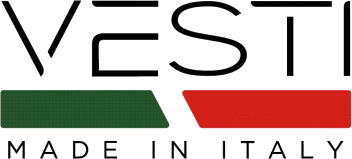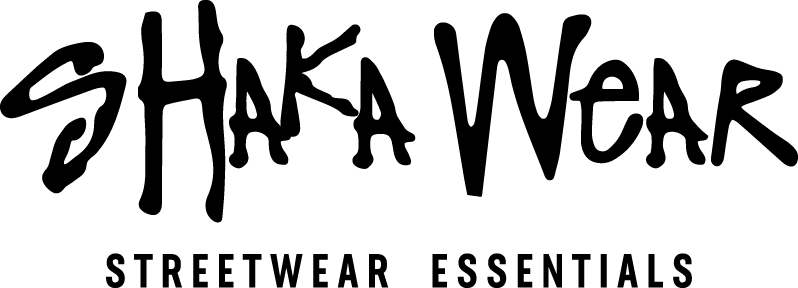Are There Any Design Limitations for DTF (Direct to Film) Transfers?

Posted by AllDayShirts on to Printing Business Tips, Printing Techniques.
Are There Any Design Limitations for DTF (Direct to Film) Transfers?
Introduction
Direct to Film (DTF) printing is revolutionizing the textile industry, offering a versatile and efficient method for transferring designs onto various fabrics. Unlike traditional printing techniques, DTF involves printing a design onto a special film which is then transferred to the fabric using heat. This process not only broadens the horizon of textile design but also introduces new challenges and considerations, particularly in the realm of design limitations. Understanding these limitations is crucial for designers, printers, and businesses to effectively utilize DTF technology and produce high-quality results.
The purpose of this blog is to delve into the intricacies of DTF design limitations. We aim to provide a comprehensive guide that outlines the key factors influencing design in DTF printing, from size and color constraints to material compatibility. Whether you're a seasoned professional or new to the world of DTF, this blog will equip you with the knowledge to navigate these limitations, optimize your designs, and unlock the full potential of DTF printing.
What is DTF Printing?
Direct to Film (DTF) printing is a method of textile printing where designs are first printed onto a specialized film and then transferred onto fabric through heat and pressure. This technique stands out in the textile printing industry for its flexibility and efficiency. In DTF printing, designs are printed using a specialized ink onto a clear film. This film is then coated with a powder adhesive and, after curing, is pressed onto the fabric. The heat transfer process bonds the ink and adhesive to the material, resulting in a vibrant, durable print.
Compared to Direct to Garment (DTG) printing, another popular textile printing method, DTF offers several advantages. While DTG prints directly onto the fabric and requires pre-treatment for colored textiles, DTF can be applied to a wide range of fabrics and colors without any pre-treatment, making it more versatile. Furthermore, DTF is often praised for its superior color vibrancy and ability to produce intricate designs with high precision.
The benefits of DTF are evident in its wide range of applications. From custom clothing and accessories to large-scale fabric printing, DTF is adaptable to various needs, offering both quality and durability. Its ability to print on diverse materials, including those not suitable for DTG, positions DTF as a go-to method for many in the textile industry. The key to maximizing these benefits, however, lies in understanding and working within the design limitations specific to DTF printing, ensuring every project achieves its highest potential.
Understanding the Basics of DTF Design
Designing for Direct to Film (DTF) printing requires a unique approach that accommodates the specificities of the DTF process. The initial step involves creating a digital design, which can be achieved using various graphic design software such as Adobe Illustrator, CorelDraw, or specialized RIP (Raster Image Processor) software tailored for textile printing. These tools allow designers to manipulate and finalize their designs before printing them onto the film.
A critical aspect of DTF design is the management of color profiles. DTF printers use a specific range of inks, and the way colors are represented on screen can differ significantly from how they appear once printed and transferred. Accurate color profiling ensures that the colors in the design are replicated as closely as possible on the final product. This involves calibrating monitors and printers to achieve a consistent color output.
Another crucial factor is design resolution. High-resolution designs ensure that the final print is sharp and clear, especially for detailed graphics. Typically, a resolution of 300 dpi (dots per inch) is recommended for DTF printing. This high resolution ensures that even the most intricate details are captured and transferred effectively, resulting in a high-quality finish on the fabric.
Common Design Limitations in DTF Printing
DTF printing, while versatile, comes with its own set of design limitations that need to be understood for optimal results.
1. Size Limitations: The dimensions of DTF prints are constrained by the printer's capacity and the size of the transfer film. Generally, DTF printers can accommodate a range of sizes, but there are maximum and minimum dimensions beyond which the quality and feasibility of printing decline. Understanding these size constraints is crucial for planning designs that are both practical and impactful.
2. Color Limitations: Color reproduction in DTF printing is influenced by factors like ink quality, printer calibration, and fabric type. While DTF can produce a wide spectrum of colors, there might be variations in color accuracy and gamut (the range of colors available for a particular print). Designers need to consider these limitations and possibly adjust their color choices to ensure the final product matches their vision as closely as possible.
3. Detail Limitations: Fine details, such as thin lines, small text, or intricate patterns, can be challenging to reproduce accurately in DTF printing. This limitation is due to factors like the resolution of the printer and the way ink spreads on the transfer film. To mitigate this, it’s important to design with these constraints in mind, avoiding overly intricate details that might not translate well onto fabric.
4. Material Limitations: While DTF printing is compatible with a wide range of fabrics, not all materials are equally suited to this technique. Fabrics with a smooth, even surface tend to work best, as they allow for better ink adhesion and more precise detail. Materials like cotton, polyester, and blends are commonly used, but it’s essential to consider how different fabrics interact with DTF inks and adhesives to ensure longevity and quality of the print.
Understanding and navigating these limitations is key to maximizing the potential of DTF printing. It requires a balance between creative design and practical considerations, ensuring that the final product is not only aesthetically pleasing but also of high quality and durability.
Overcoming Design Challenges
Navigating through the design challenges of DTF printing is pivotal in achieving high-quality results. For dealing with size constraints, it's essential to understand the maximum and minimum capabilities of your specific DTF printer. Designers should plan their artwork within these parameters, considering how the design could be creatively segmented or patterned if it exceeds the maximum size.
Enhancing color accuracy and detail in DTF printing involves several key practices. Regularly calibrating your printer ensures consistent color output. Utilizing color charts or swatches as references during the design phase can greatly improve color matching. For preserving detail, avoid extremely fine lines or tiny text and optimize contrast and sharpness settings in your design software to ensure clarity.
Choosing the right materials is also crucial. Conduct tests on different fabric types to understand how each material interacts with DTF inks and adhesives. This knowledge helps in selecting the ideal fabric for each project, ensuring not only aesthetic appeal but also durability and wearability of the print.
Best Practices for DTF Design Optimization
In DTF printing, test prints and prototyping are indispensable. These preliminary steps allow for the evaluation and adjustment of color accuracy, detail resolution, and overall print quality before final production. It’s a critical step in avoiding costly errors and ensuring customer satisfaction.
Longevity and washability are significant concerns in textile printing. To enhance these aspects, design with considerations for the fabric's nature and the ink's behavior over time. This may include choosing specific color profiles and fabric pre-treatment processes that enhance print durability.
Software plays a vital role in preparing designs for DTF. Utilize tools and features specifically designed for textile printing, such as color separation, halftone pattern adjustments, and ink limit settings. These software capabilities can greatly improve the transferability and quality of the final print.
Conclusion
Throughout this blog, we have explored the essentials of DTF design, delved into its limitations, and discussed strategies to overcome these challenges. Understanding and working within these limitations is key to harnessing the full potential of DTF printing. It’s a dynamic field that encourages creativity and innovation within its bounds. As technology evolves, so do the possibilities in DTF printing, opening new avenues for experimentation and discovery.
We invite our readers to share their experiences and questions about DTF printing. Use our review system to post an image of your work and share your insights – and as a token of our appreciation, enjoy a discount on your next project. Stay connected and informed by subscribing to our newsletter for more insights, tips, and updates on DTF printing and design. Your journey in the world of DTF is just beginning, and we’re excited to be a part of it.
Follow us on TikTok, Instagram, Facebook, and subscribe to our YouTube for more information.
- Christmas Fun Starts with Custom Hoodies & Crewnecks Using DTF Printing
- Thanksgiving DTF Apparel: Create Cozy, Colorful, and Custom Looks This Holiday Season
- Halloween DTF Apparel: Create Spooky Custom Looks with Jerzees 562 and 996 from AllDayShirts.com
- The Ultimate Guide to Soft Style Gildan Fleece: Comfort, Style, and Value for Every Wardrobe
- Why Acrylic Beanies Are a Unique Challenge
- Jerzees Fleece: The Perfect Blend of Comfort, Style, and Value
- Back-to-School DTF Printing: The Ultimate Guide to Custom Apparel for Students and Schools
- Image Enhancer for DTF Printing: How to Unlock Sharper, Brighter, and More Professional Prints
- How to Apply UV DTF: The Complete Step-by-Step Guide
- Introducing Print-on-Demand Hats: Featuring the Richardson 112, Otto 5-Panel Mid Profile Cap & High Crown Mesh Back Trucker



























